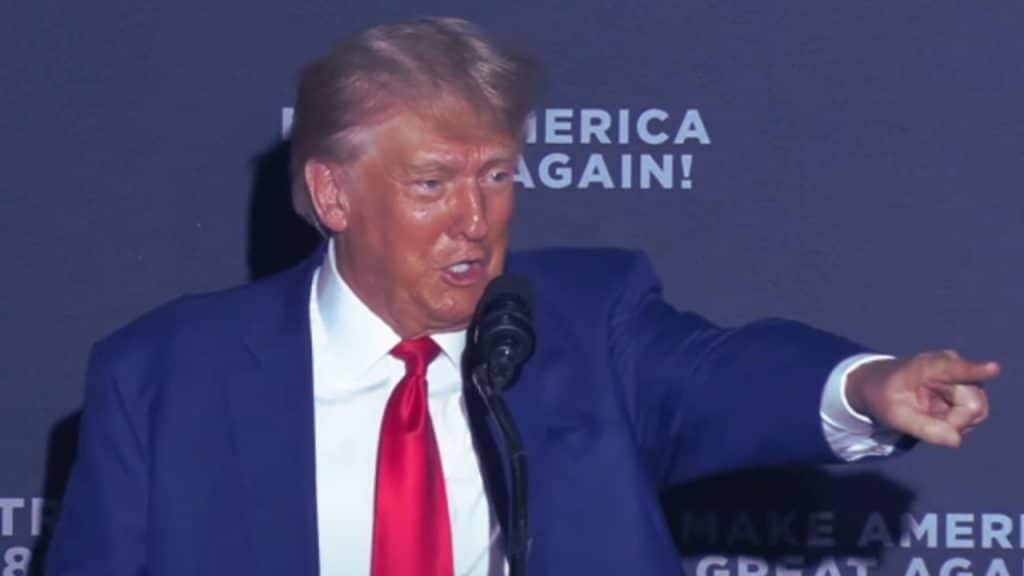
As Florida Republican Gov. Ron DeSantis withdrew from the presidential race on Jan. 21, leaving a two-way race between former President Donald Trump and former South Carolina Gov. Nikki Haley for the Republican nomination, new polling out shows a significant jump in favor of Trump in the New Hampshire primary scheduled for Jan. 23.
In the latest Boston Globe-Suffolk poll taken Jan. 20 and Jan. 21, Trump’s support in New Hampshire rose to 57 percent and Haley at 38 percent. And an Insider Advantage poll taken Jan. 21 showed Trump up to 62 percent to Haley’s 35 percent.
If Trump wins in New Hampshire, as appears likely — Trump has led 95 percent of the polls taken in New Hampshire this cycle, according to RealClearPolling.com and is leading with an average of 54 percent of Haley’s 37 percent — he will be the first Republican in a competitive race to sweep Iowa and New Hampshire. Usually, in a competitive nominating process without a sitting president running, the two states deliver opposing results.
Instead, Trump appears to be displaying all the elements of the incumbency advantage that may be proving to be insurmountable.
Assuming the polling is correct in New Hampshire, as it was in Iowa, only South Carolina, the state Haley governed, remains as an early state that could catapult her to the nomination.
In the modern nominating process, only Bill Clinton in 1992 and Joe Biden in 2020 came back after back-to-back losses in Iowa and New Hampshire to go on to become their party’s nominee. No Republican has ever achieved the feat.
But looking forward, South Carolina might prove to be even more difficult for Haley than New Hampshire. There, before DeSantis and Vivek Ramaswamy had dropped out of the race, Trump was averaging 52 percent in the South Carolina polls, leading 100 percent of them this cycle, according to RealClearPolling.com, with Haley only averaging 25 percent.
That makes New Hampshire Haley’s best shot at propelling her campaign forward. Whereas Clinton and Biden were able to overcome relatively weak challengers in 1992 and 2020, Trump as a former president has advantages that are becoming obvious in the primary process.
In fact, it is very rare for a former president to seek his party’s nomination in modern history. You have to go back to Theodore Roosevelt’s run in 1912. But when you look at the outcome, where Roosevelt gets more votes than incumbent President William Howard Taft in both the primary and the general election, it underscores that a former president’s advantage can even trump the sitting president’s.
In the modern context, and in hindsight, especially if Trump sweeps the primaries, it might highlight the futility of not having supported him in the first place, particularly when the Biden Justice Department was making moves to raid Mar a Lago and to indict him on specious political charges, which poses an existential threat not just to Trump, but to the GOP more broadly.
While arguments can be made for testing Trump in the primary, a good question looking towards 2028 might be whether some of these candidates have become permanently damaged politically in the GOP primary electorate by standing against Trump.
In the meantime, New Hampshire looms as potentially the last stand for the anti-Trump contingent of the Republican primaries — a Haley win in New Hampshire would be a shock at this point and certainly make the 2024 GOP race very interesting, even if it were to ultimately go to Trump anyway — but even if Trump wins in New Hampshire, the process might eke on to South Carolina before its seemingly inevitable conclusion. Stay tuned.
Robert Romano is the Vice President of Public Policy at Americans for Limited Government Foundation.





